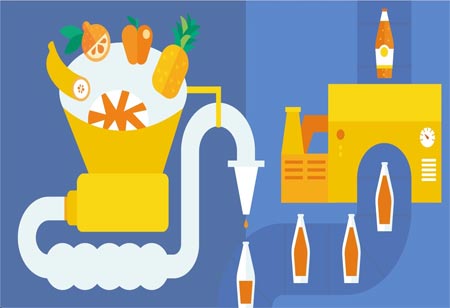THANK YOU FOR SUBSCRIBING
Be first to read the latest tech news, Industry Leader's Insights, and CIO interviews of medium and large enterprises exclusively from Food and Beverage Tech Review
Advanced Food Processing Methods
Extrusion is a process in which mixed ingredients are pushed through an opening to form a continuous shape that can then be cut into the desired size using a blade

By
Food and Beverages Tech Review | Wednesday, December 01, 2021
Stay ahead of the industry with exclusive feature stories on the top companies, expert insights and the latest news delivered straight to your inbox. Subscribe today.
Extrusion is a process in which mixed ingredients are pushed through an opening to form a continuous shape that can then be cut into the desired size using a blade. This method enables efficient mass processing of food that can be quickly cut to size once it has been processed.
FREMONT, CA: Food processing is a science-based industry that necessitates a thorough understanding of chemistry, microbiology, and the physical properties of a wide range of foods and agricultural products. It also requires the ability to design and manufacture equipment capable of processing and packaging this food in large quantities.
Advanced Food Processing Methods
Some industrial food processing methods (such as conveyorized ovens) are essentially scaled-up versions of conventional food processing methods. However, the innovations available to industrial-scale food processors have opened up completely new food processing possibilities.
Freezing, Flash Freezing, and Freeze Drying: Freezing increases the freshness and shelf life of a wide range of foods, and techniques like flash-freezing aid in the preparation of food at high speeds and volumes.
Irradiation: Exposing food to ionizing radiation will help control insects and other pests, increase food safety, and delay the sprouting of plant products.
Pasteurization: Pasteurization is a procedure for destroying potentially dangerous microorganisms that Louis Pasteur developed in 1864. Food is quickly heated and then cooled.
High-Pressure Processing: Also known as pascalization, the process involves processing food under high-pressure conditions, which kills a wide range of bacteria and extends the product's shelf life. The energy efficiency, reduced processing time, and lack of additives make this method appealing. This relatively new technique, which was invented in the 1990s and is still being refined, was first used commercially in the 1990s.
Extrusion: Extrusion is a process in which mixed ingredients are pushed through an opening to form a continuous shape that can then be cut into the desired size using a blade. This method enables efficient mass processing of food that can be quickly cut to size once it has been processed.
Modified Atmosphere Packaging: Instead of air, a special gas mix may be used within a container to slow spoilage, prolong shelf life, and increase food safety.
Chemical Additives: Antioxidants, in addition to vitamins, help to keep oil from being rancid. Emulsifiers prevent items like salad dressing from splitting in the package into oil and water.
I agree We use cookies on this website to enhance your user experience. By clicking any link on this page you are giving your consent for us to set cookies. More info


However, if you would like to share the information in this article, you may use the link below:
https://www.fbtechreviewapac.com/news/advanced-food-processing-methods-nwid-903.html





